
Powick Old Bridge
This Grade I listed bridge was closed February 2024 due to a wing wall collapse. Find out about its restoration here.
Background
The Grade I listed Powick Old Bridge in Worcester was closed in February 2024 to pedestrians and cyclists for safety reasons.
Investigations showed that part of the supporting wingwall collapsed into the River Teme, resulting in loss of material and support for the main bridge section.
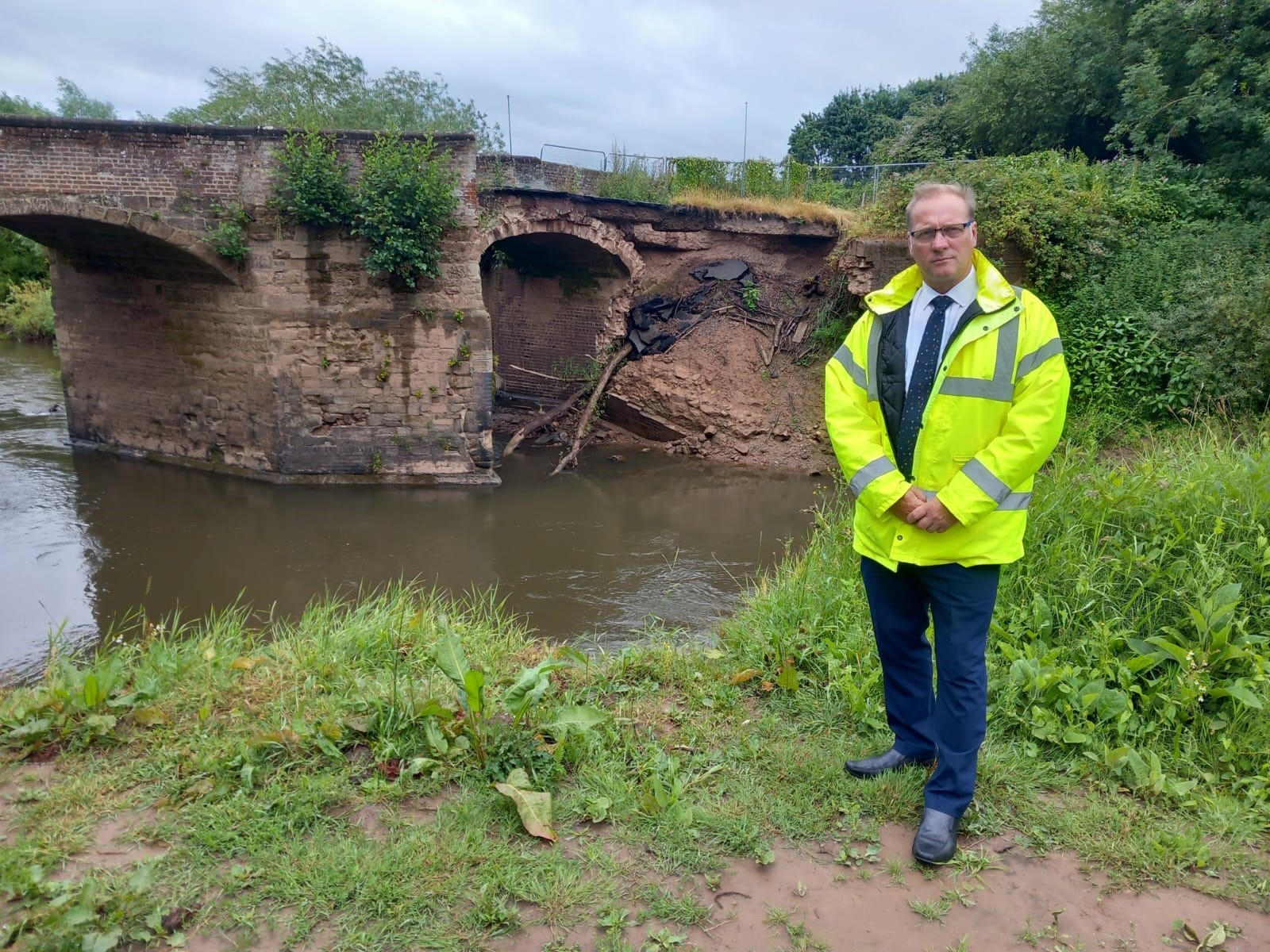
The collapse of the bridge, which is also recognised as a Scheduled Ancient Monument, is likely caused by recent flooding and a buildup of debris.
According to Historic England, the bridge was constructed before 1447 and was partially rebuilt during the 17th century. It is constructed from stone with brick and is approximately 60m long and up to 7m wide. The bridge has a brick parapet approximately 1m high with chamfered stone coping except on the west where it is interrupted by a road.
Latest updates
17 March 2025
The restoration of the historic Powick Old Bridge has reached a significant milestone with the successful installation of a temporary support structure to stabilise the bridge’s damaged main arch.
Following extensive preparatory work, including the installation of a platform concrete base on the riverbed to anchor the frame, this nine-metre-long steel structure will now provide essential support without being physically attached to the bridge itself, ensuring compliance with its scheduled monument status.
Crafted primarily from steel and timber, the custom-made support has been carefully shaped to fit around the bridge’s existing masonry, to protect it from further damage. Whilst the temporary structure is now in position, final adjustments will take approximately two weeks to complete.
The support system, which arrived on site last week via a wide-load delivery from a UK manufacturer, marks a crucial phase in the bridge’s restoration.
Powick Old Bridge, which dates back to before 1447 and was partially reconstructed in the 17th century, has been closed to pedestrians and cyclists since February 2024. The restoration project is not just about repairing a bridge; it is about preserving an iconic piece of Worcestershire’s history for generations to come.
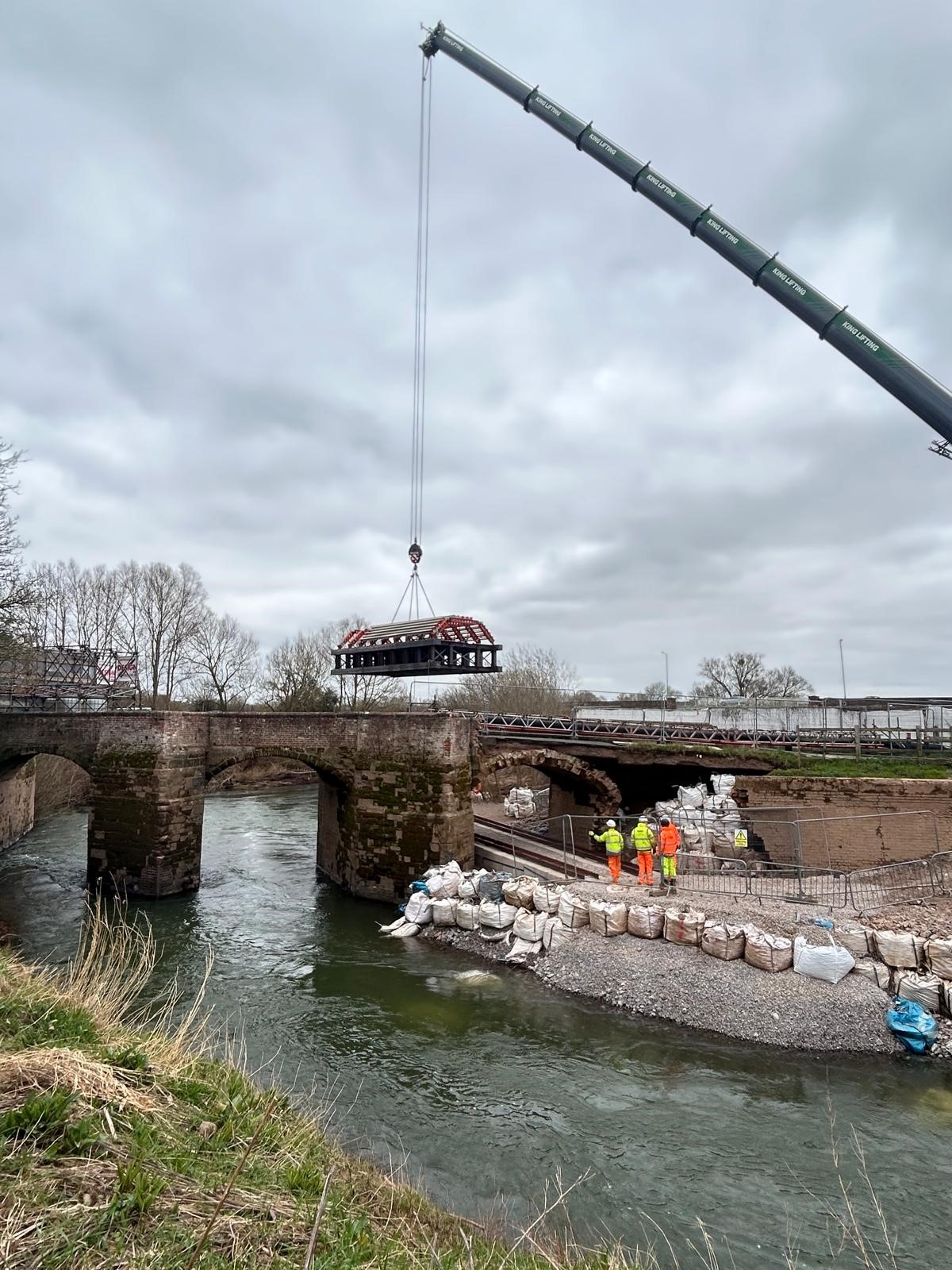
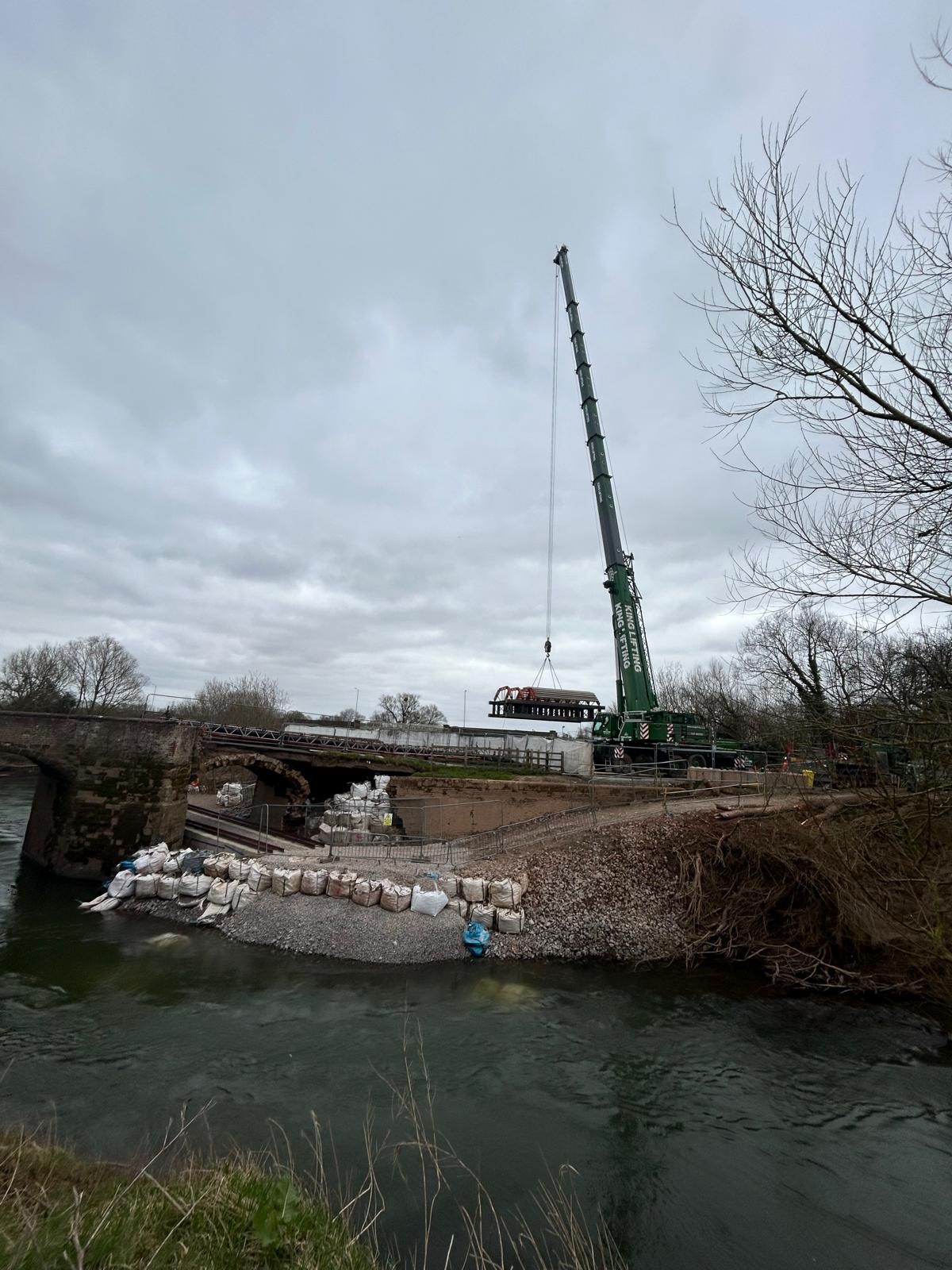
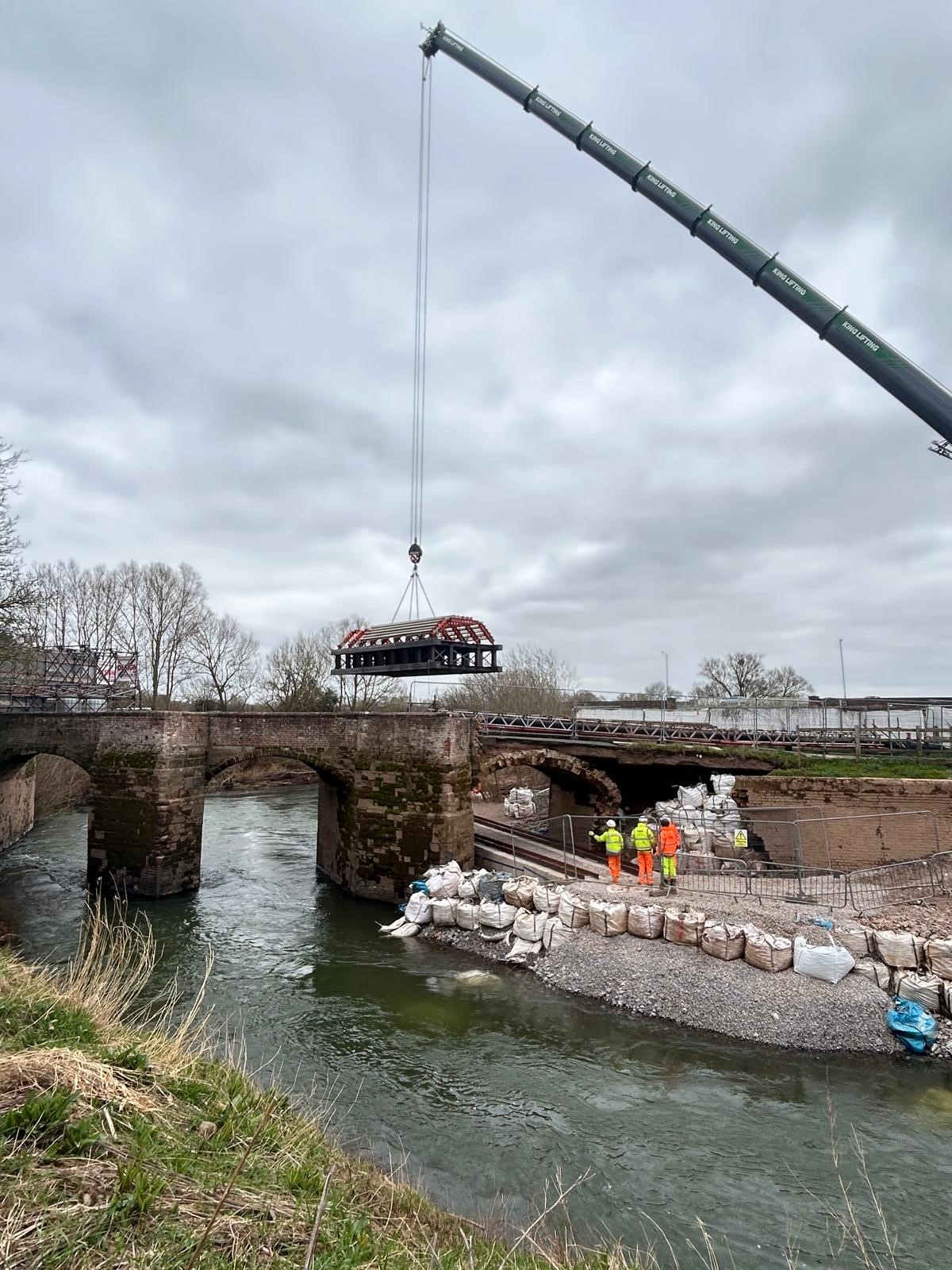
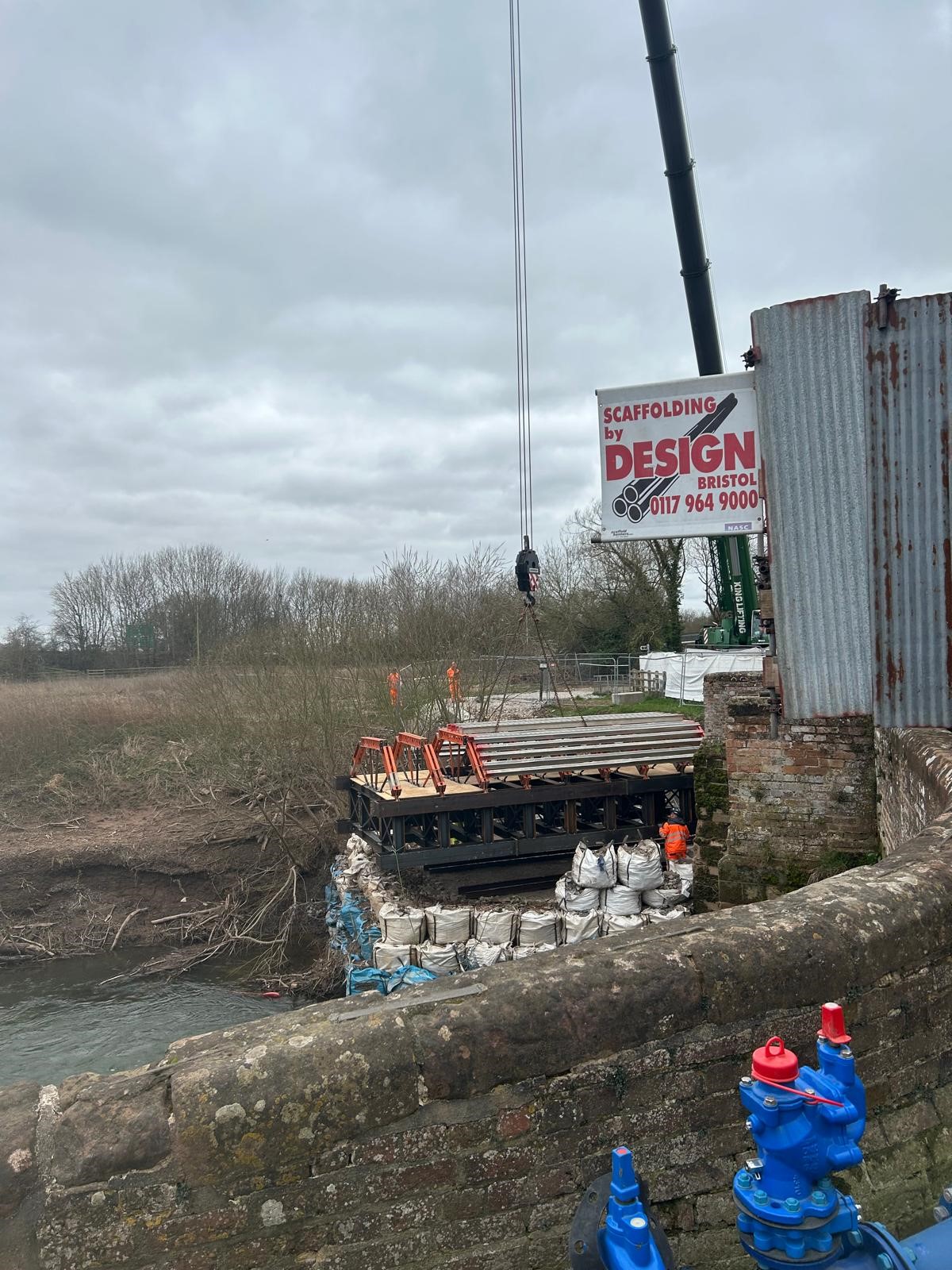
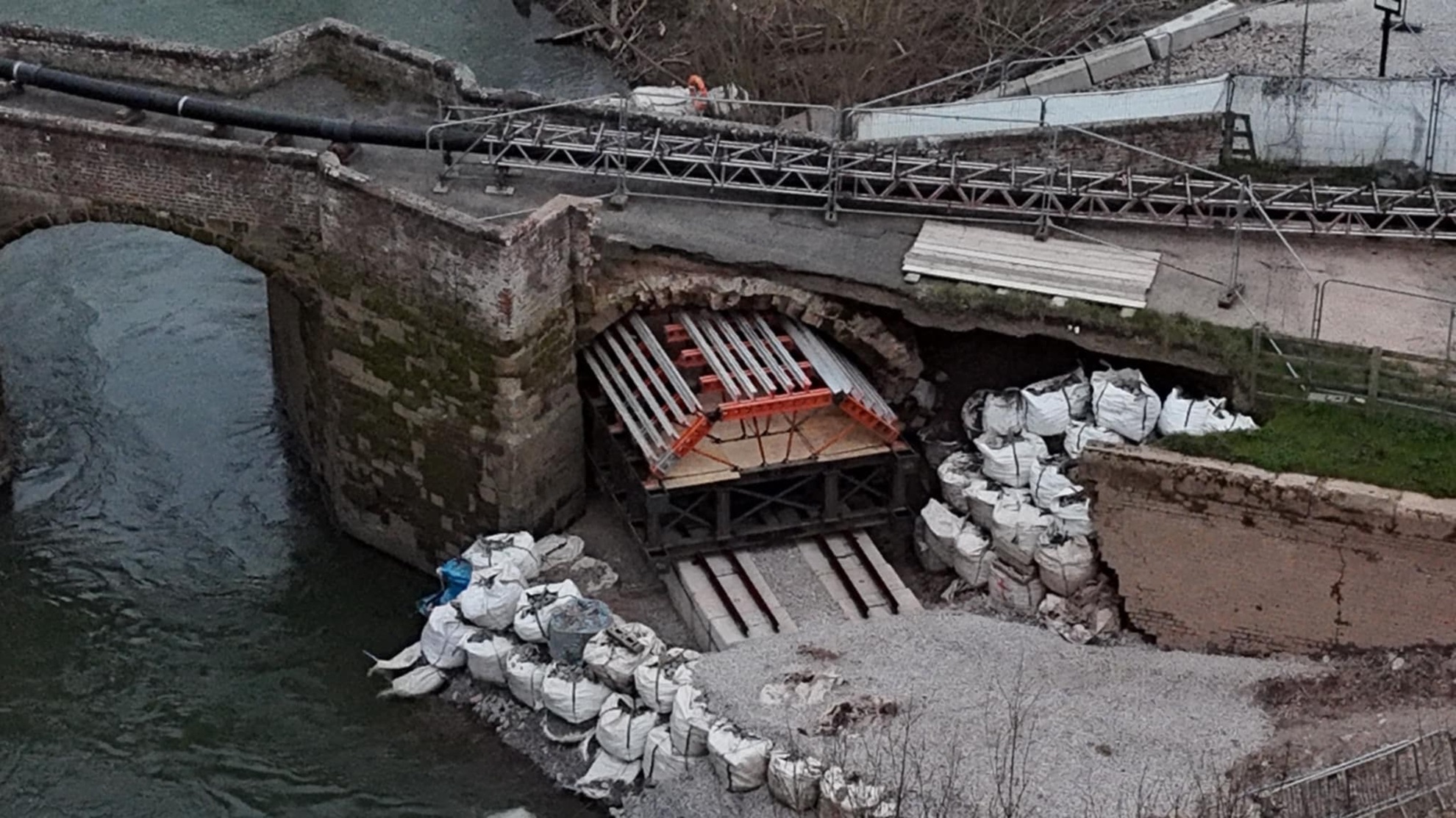
Powick Bridge restoration image courtesy of Dan Jones.
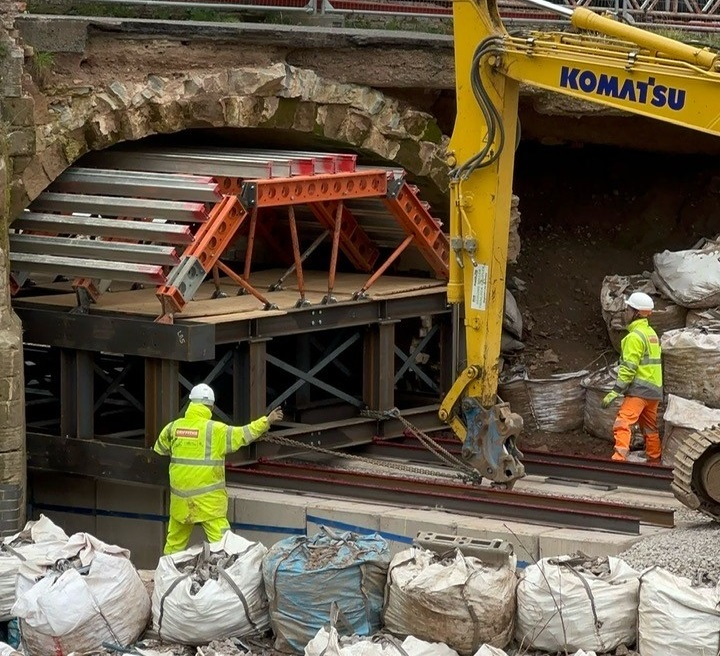
Powick Bridge restoration image courtesy of Dee Bruce.
5 March 2025
Despite challenging winter weather and multiple flood events, restoration work on the scheduled monument listed Powick Old Bridge is making steady progress, with significant milestones already achieved in preserving this historic landmark.
With approval from key stakeholders, a temporary support design for the main damaged arch on the Hams Way approach has been finalised.
Debris from previous flood events has been safely removed and stored off-site.
Preparatory work on the riverbed ahead of the installation of the temporary structure has now been completed, and backfilling of voids behind the wingwall is underway.
Additionally, Severn Trent Water has successfully completed the overland diversion of the water main crossing the bridge.
Over the coming weeks, the temporary support structure will be delivered and assembled, allowing for further stabilisation work.
Ground investigation work including boreholes, to inform further plans, will also be carried out as soon as conditions allow.
Updates during 2024
5 November 2024
We opened our doors this week to passionate members of local history groups for an exclusive look at the ongoing restoration of the iconic Powick Old Bridge.
The event invited representatives from the Worcester Civic Society and the Battle of Worcester Society, all eager to witness the strides being made in this historically significant project, to meet with us and our contractors Alun Griffiths Contractors Ltd and Jacobs.
It was a pleasure to have the historical groups on site and we were excited to share our current progress and to highlight our commitment to ensuring that this bridge continues to be a cornerstone of our city’s rich history.
As the restoration continues, a crane has already actively positioning bags of stone ballast into the riverbed, establishing a vital dry working area essential for the long-term repair of this treasured monument. In recent weeks, a Spider Excavator has worked to recover collapsed materials from the river, ensuring that progress remains steady.
With the ballast wall in place, crews will now be able to work on the arch without the threat of water intrusion, and should flooding occur, water will be effectively diverted over the top.
The next critical phase of the project is to undertake a ground investigation. This step will take place before the installation of a temporary support frame, scheduled for November.
Following these temporary works, detailed plans for a permanent reconstruction will be developed in collaboration with the Environment Agency and Historic England, with additional approvals required before the final phase of work commences next year.
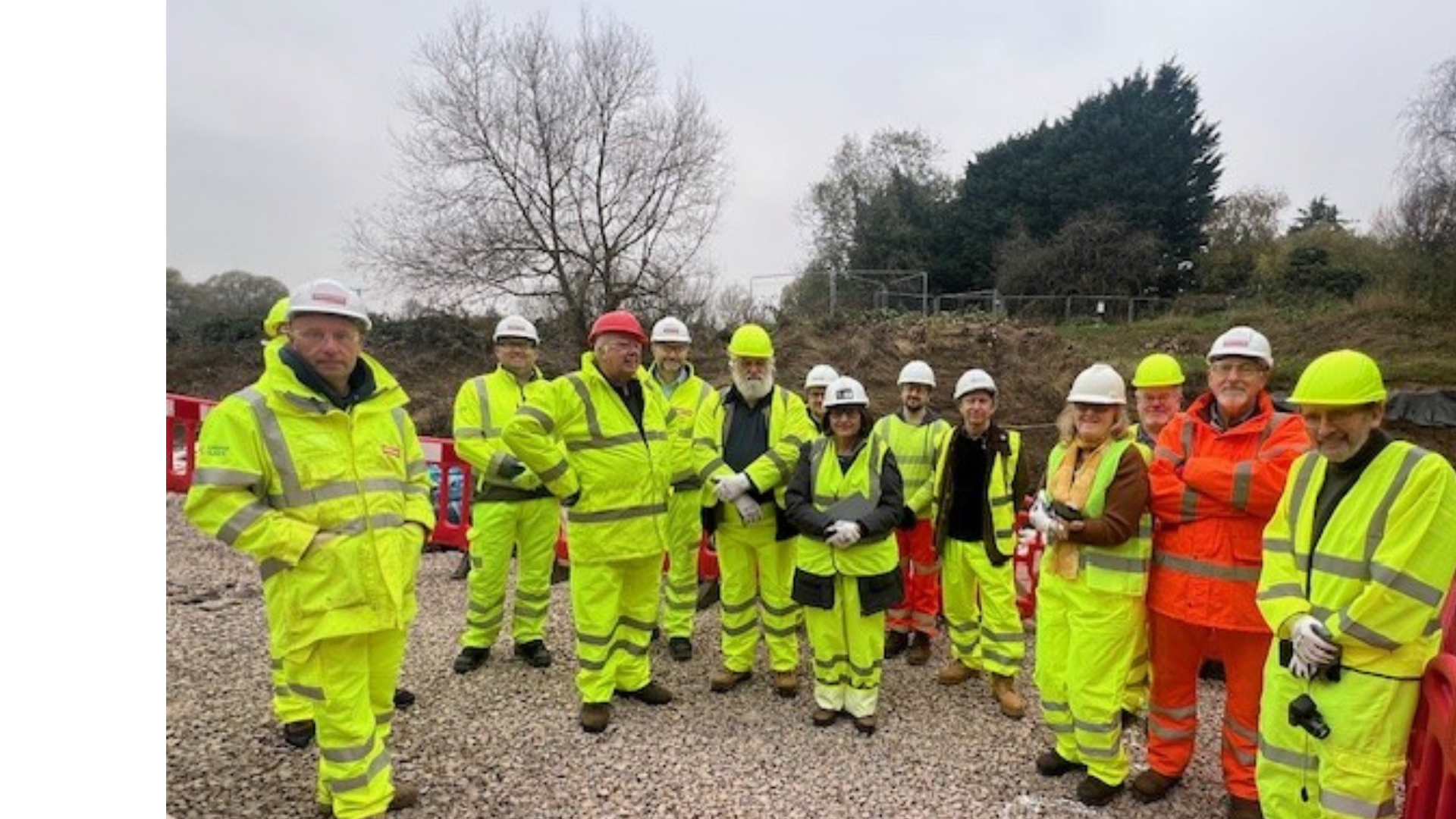
29 October 2024
We are pleased to confirm, following recent media reports, that there is no "Whirlpool" on Powick Old Bridge. Our latest inspections have also shown no further degradation to the existing hole, despite recent flooding.
The hole remains bounded on two sides by water mains that cross over the bridge. We have raised our concerns with Severn Trent about the potential risk of further collapse, but we are happy to report that, to date, no additional issues have occurred.
As we move forward, we are ready to begin the next critical phase of the project: a Ground Investigation. This step will take place before the installation of a temporary support frame, scheduled for November.
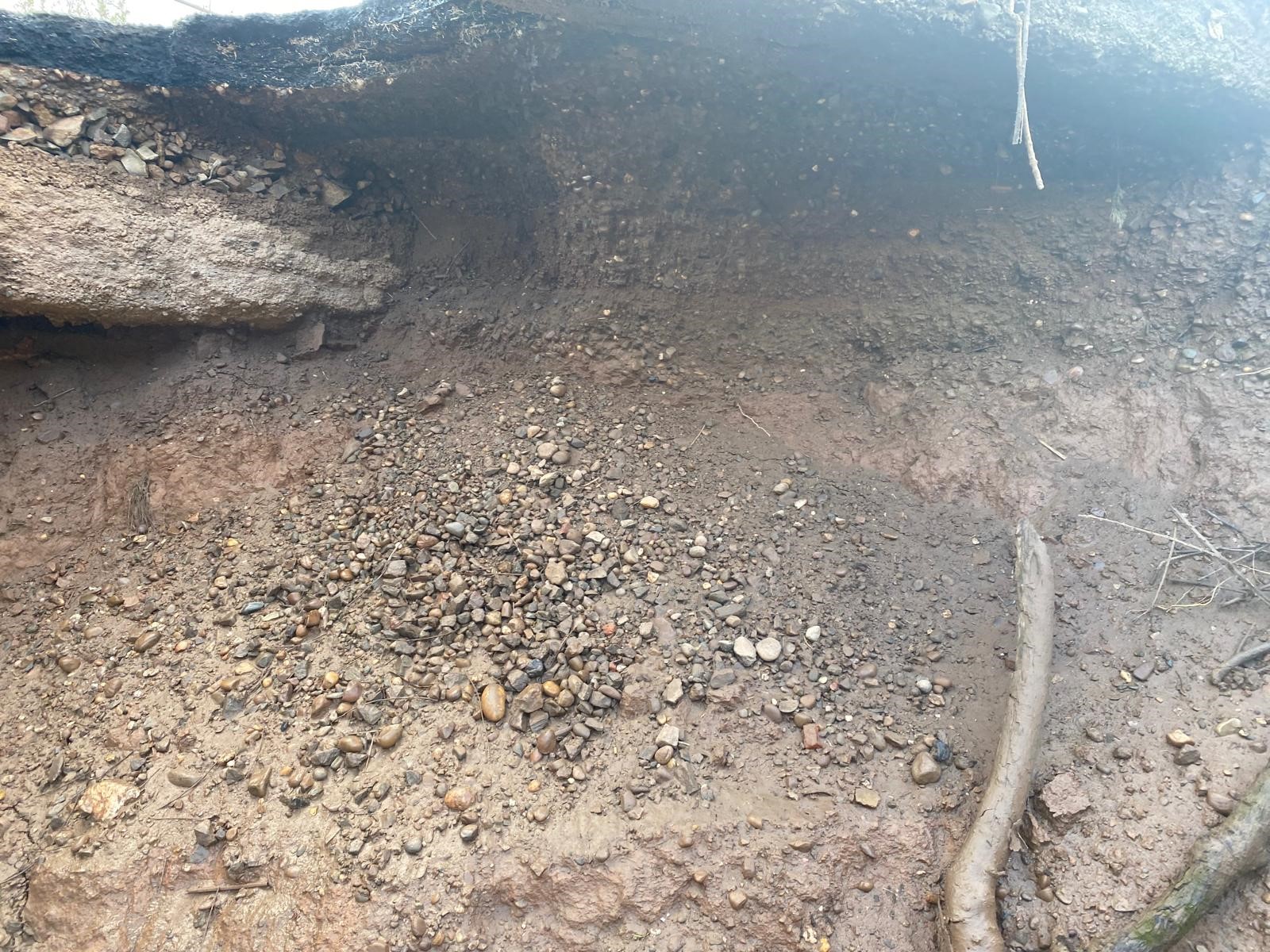
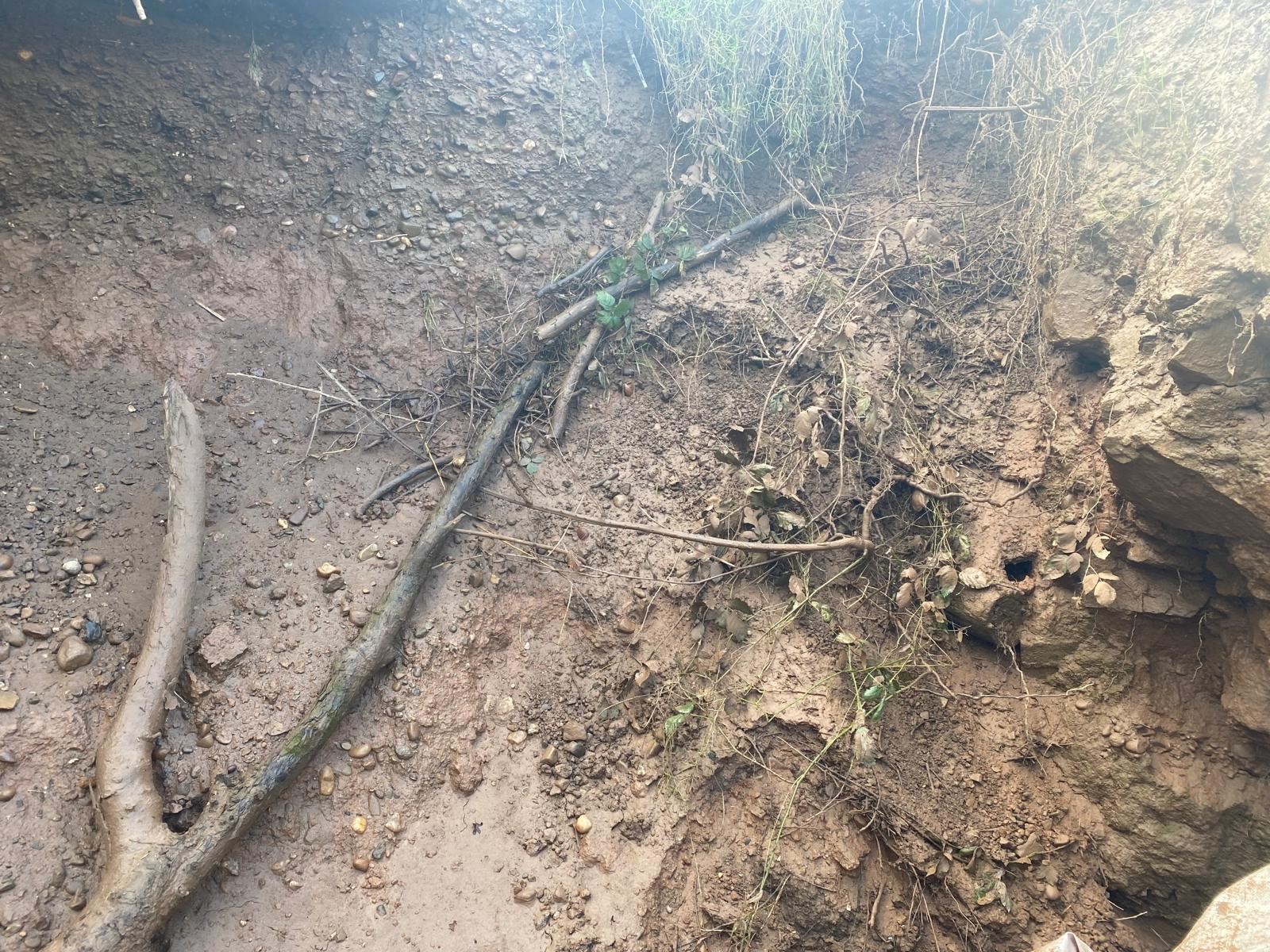
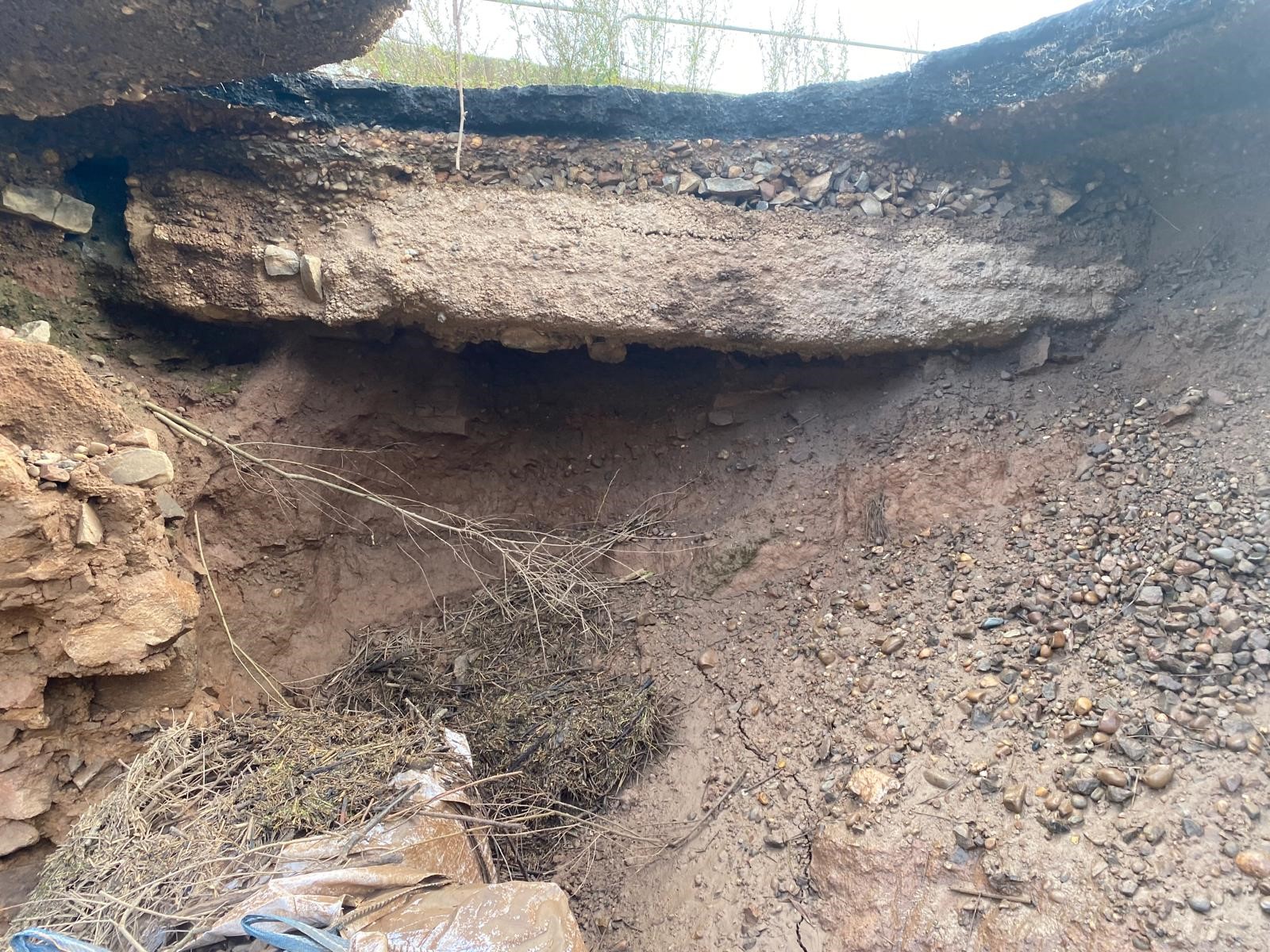
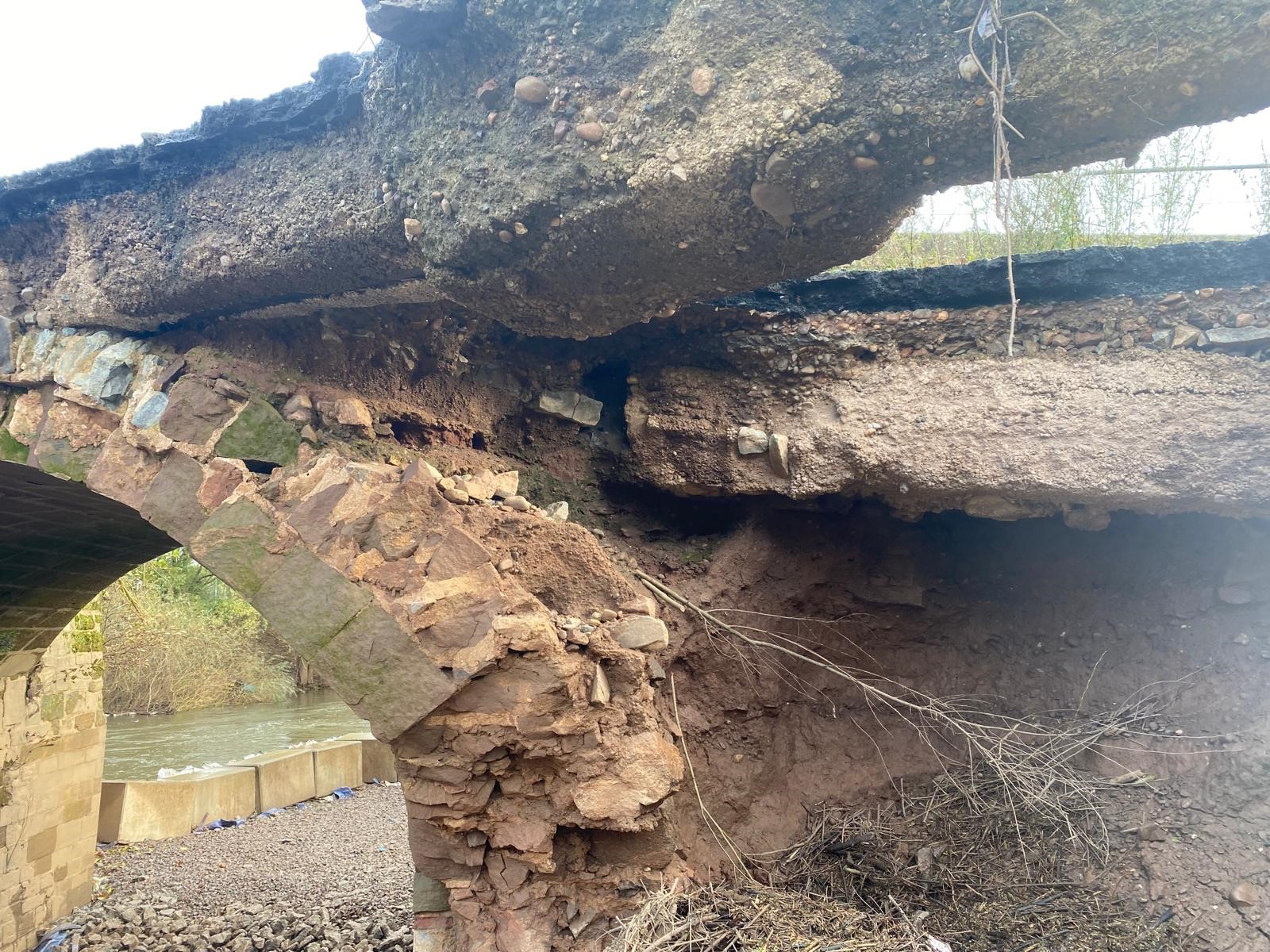
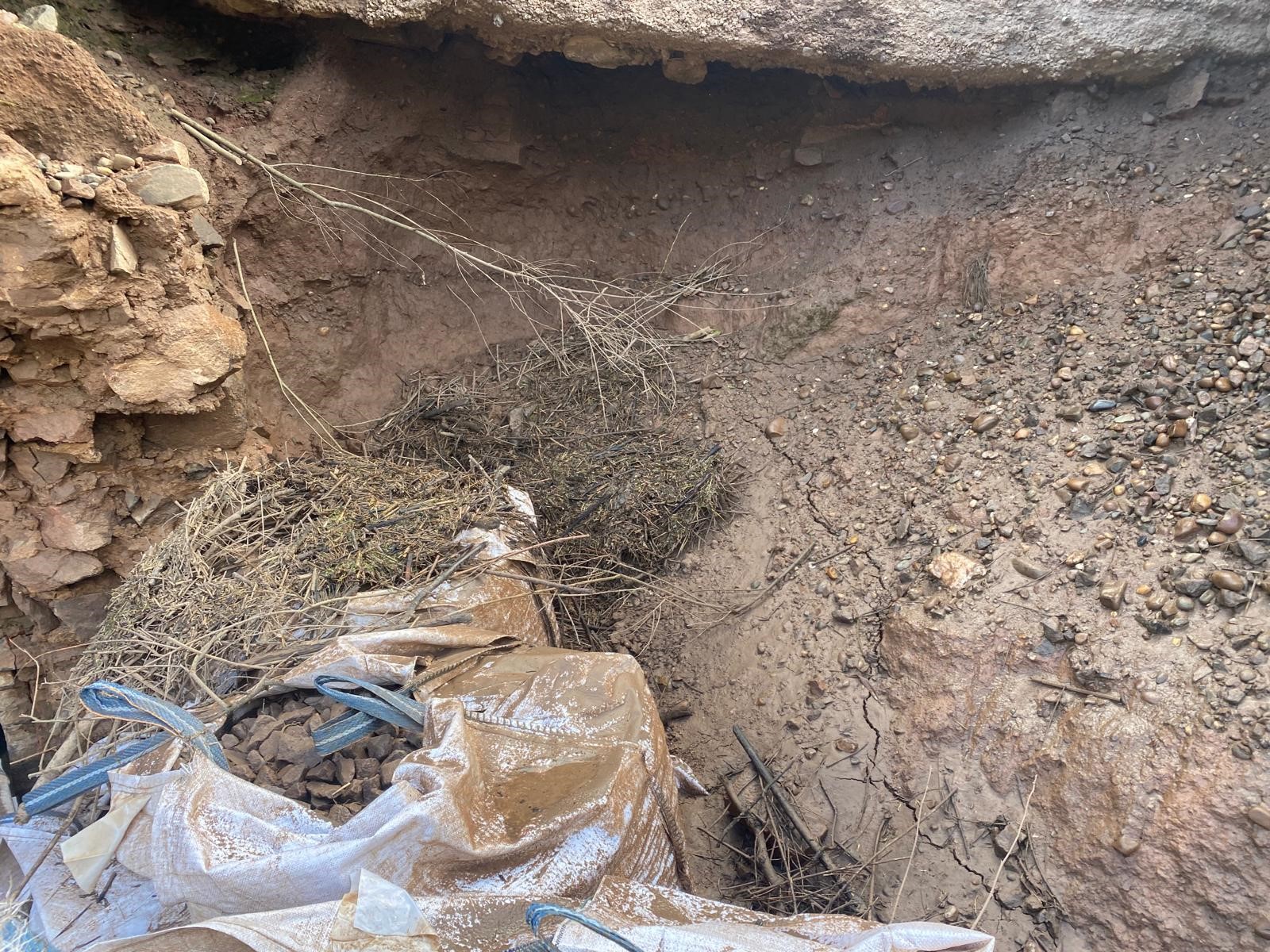
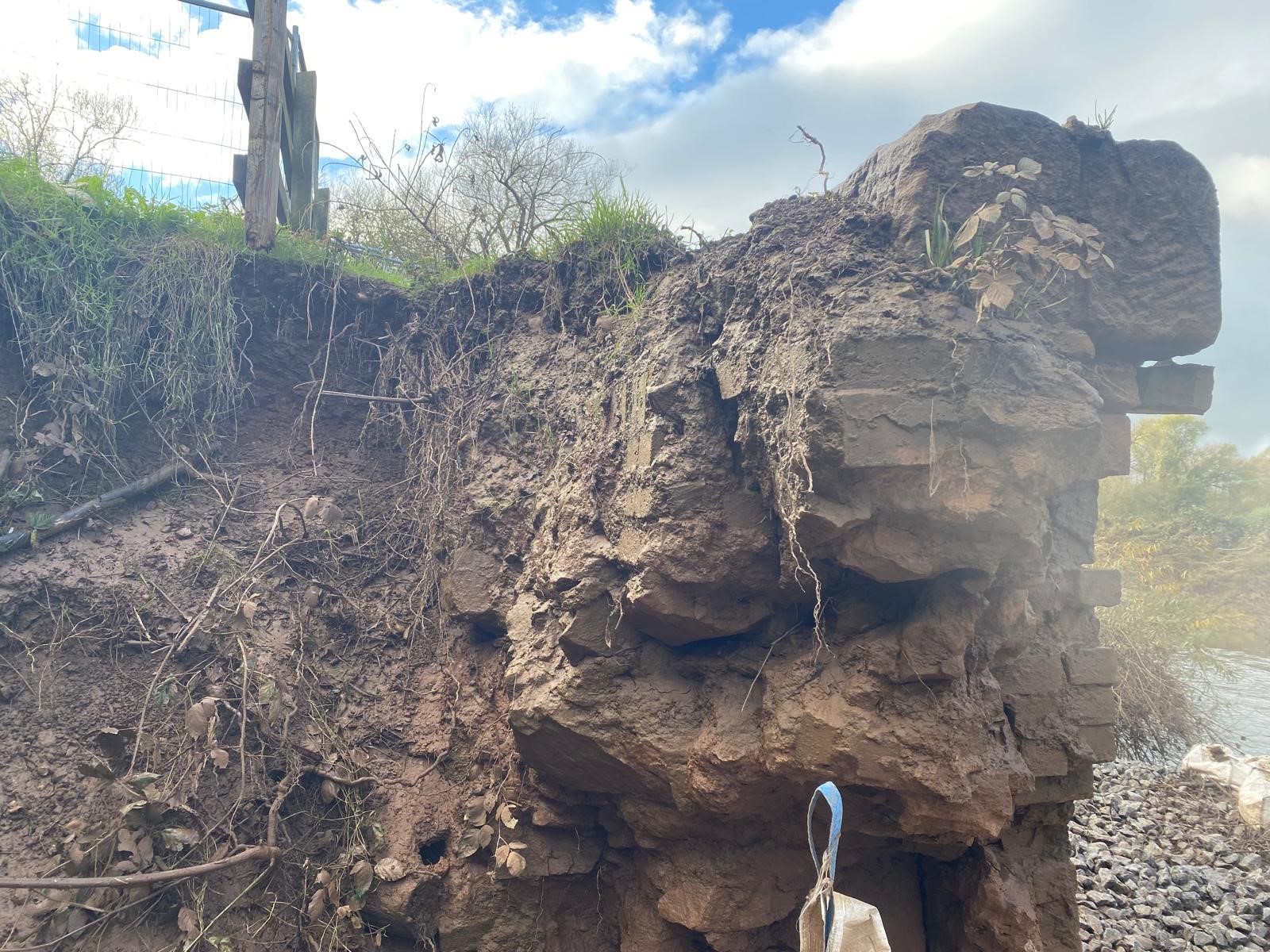
24 September 2024
Powick Old Bridge repair progresses with crane on site building working platform.
A crane is now on site lifting bags of stone (ballast) into the riverbed to create a dry working area at Powick Old Bridge, a key component in the long term repair of the historic monument.
A Spider Excavator is also on site recovering collapsed material from the river.
Bags of stone placed together to form a ballast wall will safeguard the collapsed area of the wingwall from further damage, and allow the arch and abutment to be inspected further.
It will also protect the damaged section from any further loss of material, and add support to the whole structure before the main repairs begin.
Having the ballast wall in place will prevent water from entering the arch so that work can take place, and if the river does flood, water will be diverted over the top.
This recovery approach will also lead to a large proportion of the original stonework being reclaimed from the river bed. The wing wall will need to be completely taken down as part of the repair process, however, the rebuild will use as much of the initial stone and brick as possible.
The temporary works will be followed by detailed design of a permanent reconstruction, which is being worked on in partnership with the Environment Agency and Historic England.
The design will require further approvals ahead of final works next year.
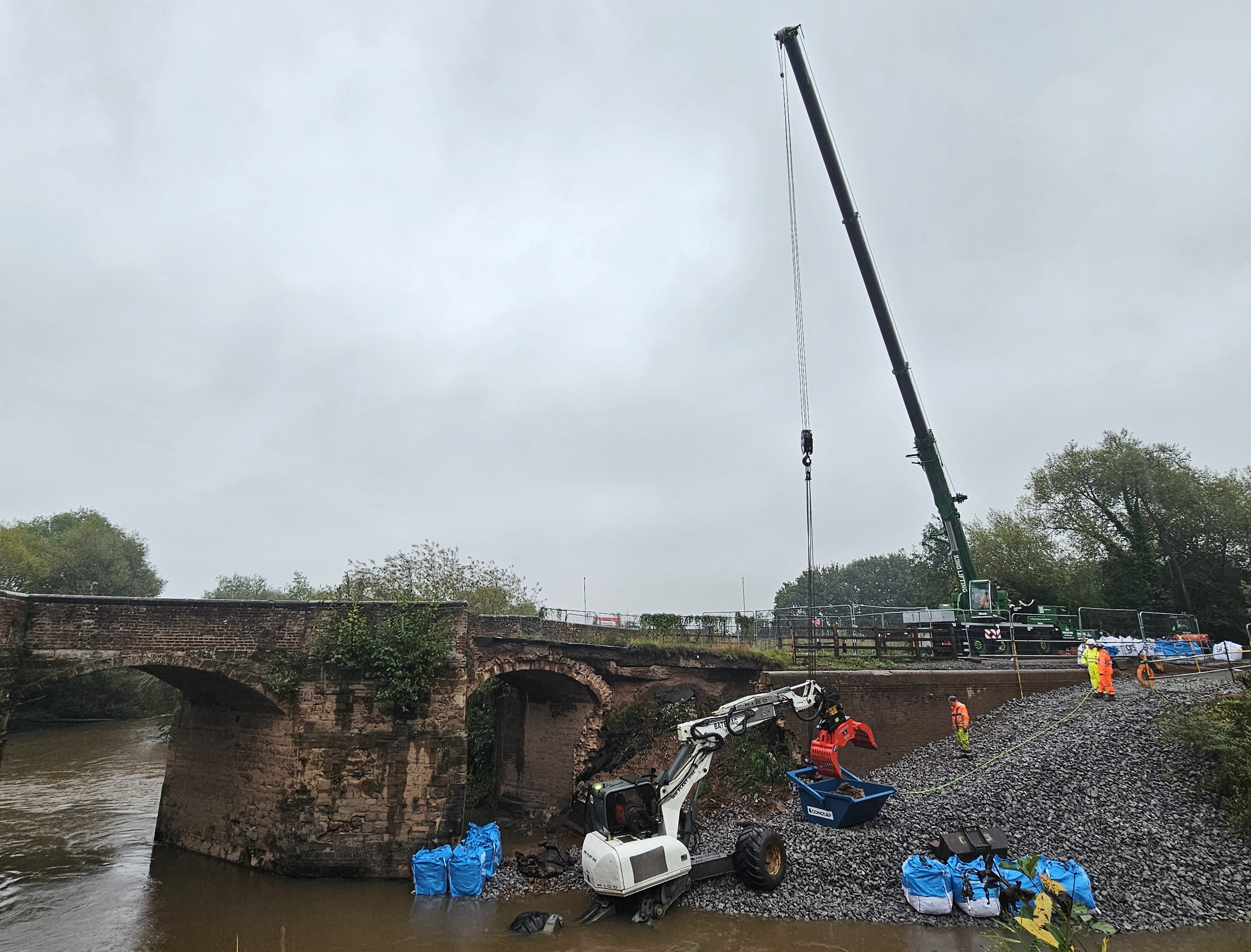
September 2024
Work is progressing as part of the repairs to Powick Old Bridge. An excavator is now on site moving stone into the river bed to create a dry working platform onto which bags of ballast will be lifted into place by a crane, arriving next week.
July 2024
First stage of long-term repair of Powick Old Bridge will begin in summer 2024.
A temporary ramp will be installed from the footway into the river channel, and a working platform created on the upstream side of the river, Worcestershire County Council has confirmed.
The purpose of the working platform is to safeguard the collapsed area of the wingwall from further damage, and to allow the arch and abutment to be thoroughly inspected.
Recognising the important historic nature and originality of the structure, it will also protect the damaged section from losing more material and add support to the whole structure before the main repairs begin.
The temporary works will be followed by detailed design of a permanent reconstruction which will require further approvals ahead of final works next year.
The temporary platform will prevent water from entering the arch so that work can take place, and if the river does flood water will be diverted over the top of the platform.
This approach will also lead to a substantial proportion of the original stonework being reclaimed from the riverbed. The wing wall will need to be completely taken down as part of the repair process, however, the rebuild will use as much of the initial stone and brick as possible.
It is hoped that the arch can be saved due to its historical significance, however, to further understand the extent of the damage the arch will need to be supported.
This will require an additional temporary platform downstream of the river. There may be a need to build a steel A-Frame which will then allow the arch to be reinforced so that the bridge can be fully inspected to enable repairs to commence.
It has taken time to get to this point as originally access was limited due to flooding and since then, there has been substantial engagement with key partners.
This includes Natural England, as the structure is within a Site of Special Scientific Interest (SSSI), Historic England due to the important nature of the structure, the Environment Agency due to river impacts, as well as several specialist contractors. The design for the temporary works is as complicated as the permanent repair works.
 Facebook
Facebook X
X Email
Email WhatsApp
WhatsApp Messenger
Messenger